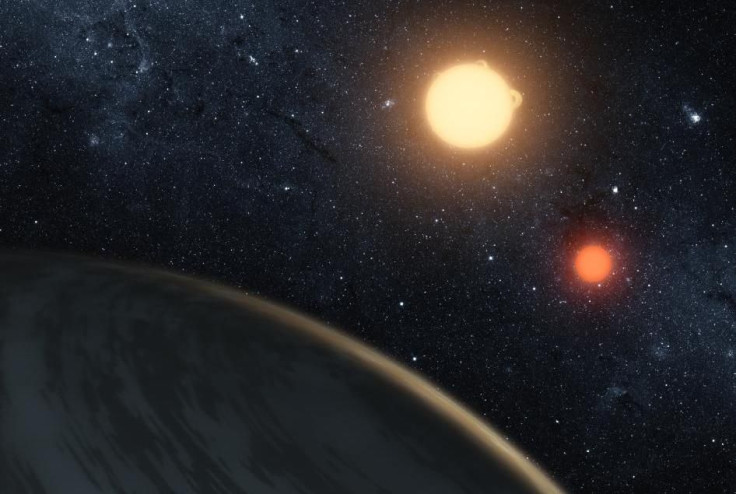New Study Explains How Circumbinary Planets -- Ones That Orbit Two Stars, Like Star Wars' Tatooine -- Are Formed

If Luke Skywalker's home planet Tatooine, from the Star Wars franchise, were a reality, it would have formed far away from its location in orbit with the two-star binary system, according to a new study by scientists at the University of Bristol who studied Tatooine’s real-world counterparts with the Kepler space telescope.
The scientists examined Kepler-34(AB)b, which is called a circumbinary planet as its orbit encompasses two stars. Such a binary star system is home to extreme environmental conditions as powerful gravitational forces from the two stars can lead to destructive cosmic collisions -- activities that make it difficult to explain the presence of such planets.
“Our simulations show that the circumbinary disk is a hostile environment even for large, gravitationally strong objects,” Zoe Leinhardt of the University of Bristol said, in a statement. “Taking into account data on collisions as well as the physical growth rate of planets, we found that Kepler 34(AB)b would have struggled to grow where we find it now.”

As part of the study, published in Astrophysical Journal Letters, the scientists completed computer simulations of the early stages of planet formation around the binary stars using a sophisticated model that calculates the effect of gravity and physical collisions on and between one million planetary building blocks.
The scientists concluded that the majority of these planets must have formed far away from the central binary stars and then migrated to their current location.
Based on the results of the study, the scientists now believe that all of the currently known circumbinary planets also migrated from their formation locations. According to the scientists, a possible exception in this regard is Kepler-47 (AB)c, which is farther away from the binary stars than any of the other circumbinary planets.
“Circumbinary planets have captured the imagination of many science-fiction writers and film-makers - our research shows just how remarkable such planets are,” Stefan Lines of the University of Bristol and the study’s lead author said, in the statement.
“Understanding more about where they form will assist future exoplanet discovery missions in the hunt for earth-like planets in binary star systems.”
In 2011, NASA's Kepler mission made the first unambiguous detection of a circumbinary planet called Kepler-16b, which was found 200 light-years away from Earth. Unlike Tatooine, the planet was cold, gaseous and not thought to harbor life.
© Copyright IBTimes 2025. All rights reserved.





















